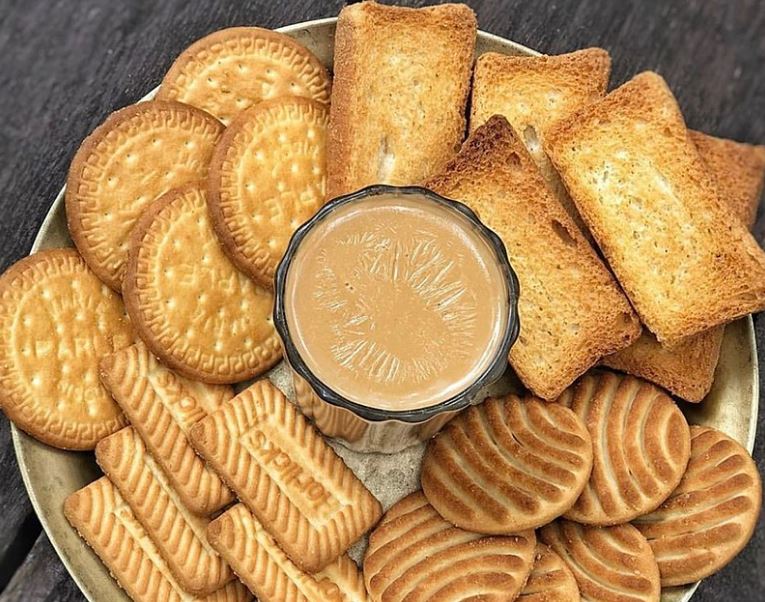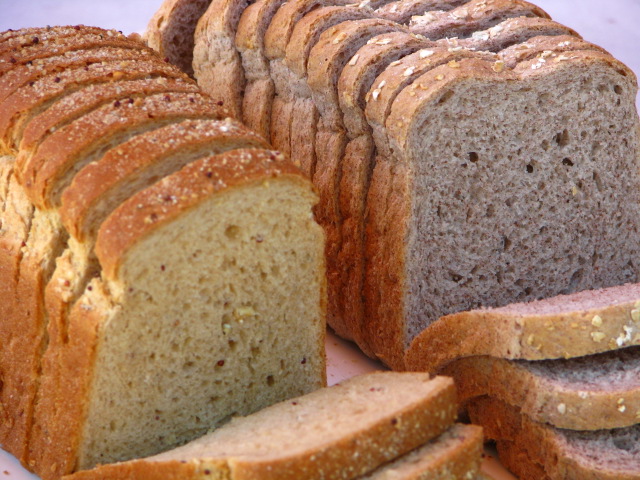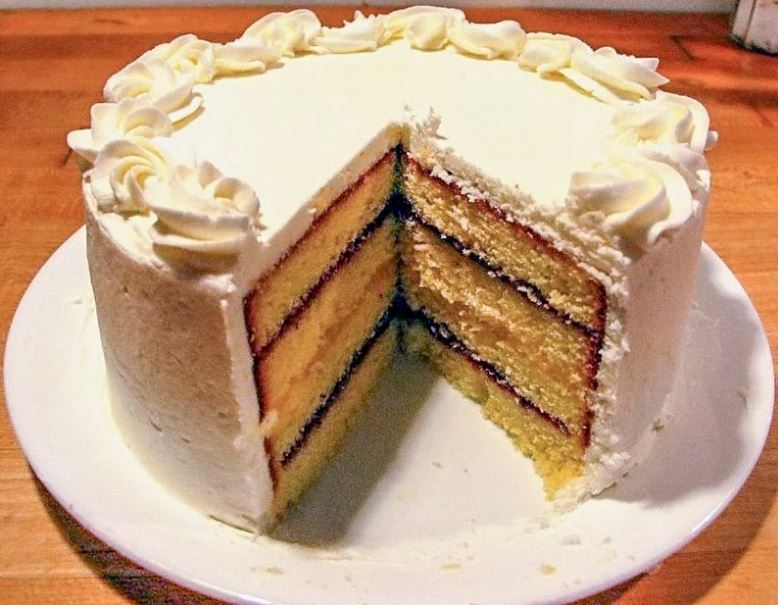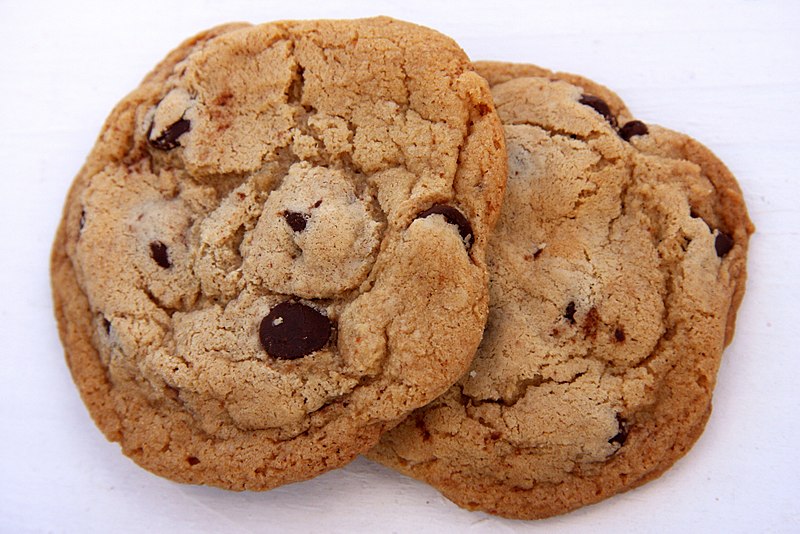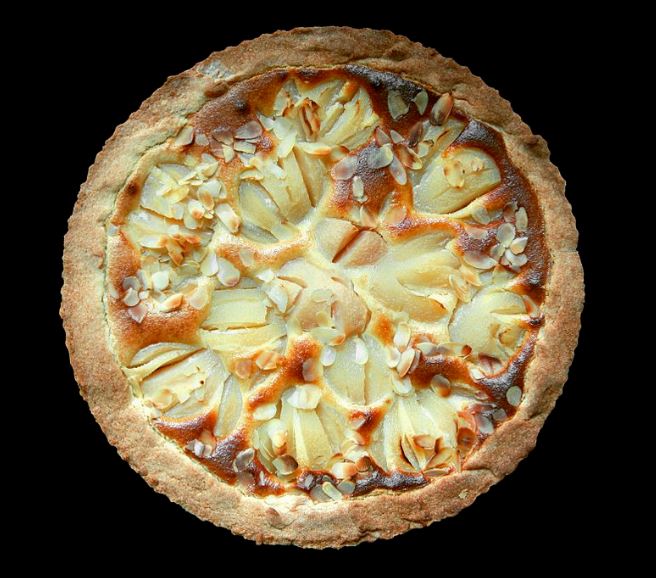The people’s passion for baking becomes more peaked during the pandemic, but the tendency for this home baking dates back further. Another reason for this is a desire for healthier foods as well as the utilization of high-quality ingredients, knowing to have complete control over what goes into your bread when you bake it yourself. This has resulted in an increase in sales of convenience products in the food business, such as ready-bake mixes, among other items.
So, Let’s look at some of the different types of baked goods.
1. Biscuit
Biscuit is derived from the Latin words bis (twice) and coquere, coctus (to cook, cooked), and hence means “twice-cooked.” This is because biscuits were originally baked and then dried out in a slow oven. This concept was then adopted into English during the Middle Ages in the 14th century as the Middle English word bisquite to denote a firm, twice-baked product. Since around 1703, the Dutch language has used the term koekje (“small cake”) to refer to a similar hard, baked confection.
A biscuit is a little baked product that is known as a “cookie” or a “cracker” in the United States and sometimes in English-speaking Canada outside of North America. Chocolate biscuits, digestives, hobnobs, ginger nuts, rich tea, shortbread, bourbons, and custard creams are common savory and sweet biscuits in the United Kingdom, the Isle of Man, and Ireland. The term “cookie” usually refers to a single form of biscuit, a sweeter baked dough with chocolate chips or raisins; however, it may also refer to specific varieties of biscuits or bread depending on where you live.
2. Bread
Bread can be leavened by naturally occurring bacteria, sourdough, chemicals, baking soda, industrially generated yeast, or high-pressure aeration, which forms the gas bubbles that fluff up bread. In many countries, commercial bread contains additives to improve flavor, texture, color, shelf life, nutrition, and ease of production. It has been a key part of many cultures’ diets throughout recorded history and around the world. It is one of the earliest human-made delicacies, dating back to the dawn of agriculture, and it is important in both religious rites and secular society. Some of the common types of bread are bagels, bread rolls, buns, flatbread, and muffins.
3. Brownie
A brownie or most commonly a chocolate brownie is a flat square or sometimes rectangular baked confection. Depending on its density, a brownie can be cakey or fudgy which often has a glossy upper crust. This was developed in the United States around the 19th century and was popularized in U.S. and Canada in the early half of the 20th century.
4. Cake
On ceremonial occasions such as weddings, anniversaries, and birthdays, a cake is frequently served as a celebratory dish. Flour, sugar, eggs, fat such as butter, oil, or margarine, a liquid, and a leavening agent such as baking soda or baking powder are the most common ingredients. Dried, candied, or fresh fruit, nuts, chocolate, and extracts such as vanilla are commonly added ingredients, with countless substitutes for the core ingredients. Cakes can also be filled with fruit preserves, nuts, or dessert sauces such as custard, jelly, cooked fruit, whipped cream, or syrups, and embellished with marzipan, piped borders, or candied fruit.
5. Cookie
A cookie is a compact, flat, sweet snack or dessert that is baked or cooked. It is often made using flour, sugar, eggs, oil, fat, or butter. Other ingredients like raisins, oats, chocolate chips, nuts, and so on may be included like Nutella sandwich cookies or chocolate-dipped cookies which are shortbread cookies variations. Except in the United States, crunchy cookies are known as biscuits in most English-speaking countries. Many Canadians use this word as well. Even in the United Kingdom, chewier biscuits are occasionally referred to as cookies. Some cookies, such as date squares or bars, may also be named after their shape. Cookies are frequently served with liquids such as milk, coffee, or tea, and are sometimes “dunked,” a method of releasing more flavor from confections by dissolving the sugars and reducing their texture. Bakeries and coffeehouses sell freshly baked cookies, with the latter ranging from small business-sized shops to multinational corporations such as Starbucks.
6. Cracker
In American English, the phrase “cracker” refers to savory or salty flat biscuits, whereas “cookie” refers to sweet goods. Crackers are also manufactured in a variety of ways. Crackers can be eaten on their own, but they also go well with cheese or meat slices, fruits, dips, or soft spreads like jam, butter, peanut butter, pâté, or mousse. Between samples, bland or mild crackers are occasionally employed as a palate cleanser in food product testing or taste testing. Crumbled crackers can also be added to a soup. Modern crackers are related to nautical ships’ biscuits, military hardtack, chacknels, and sacramental bread. The distinctive holes found in many crackers are known as “docking” holes. The holes in the dough prevent excessive air pockets from accumulating in the cracker when baking.
7. Pastry
A pastry is a baked food prepared from flour, water, and shortening solid fats such as butter or lard that can be savory or sweet. The term “pastries” refers to a wide variety of baked goods created with ingredients such as flour, sugar, milk, butter, shortening, baking powder, and eggs. Pastries are small tarts and other sweet baked goods. Originally, the French term pastisserie refers to anything baked in the dough, such as a meat pie, and was not considered a fancy or sweet delicacy. It can also refer to the pastry dough used to make such baked goods. Pastry dough is thinly rolled out and used as a basis for baked goods.
8. Pie
The term “pie” first appears in 1303 in the cost books of the Bolton Priory in Yorkshire. The crusts of pies define them. A filled pie, also known as a single-crust or bottom-crust pie, has a pastry lining in the baking dish and the filling placed on top but left open like the apple pie which is one of the most popular desserts in the United States and many countries in the world. Before baking, a top-crust pie has the filling at the bottom of the dish and is topped with dough or another covering. A pastry shell completely encases the filling in a two-crust pie. It is a common type of pastry used for pie crusts, however other ingredients such as baking powder biscuits, mashed potatoes, and crumbs can also be used. Pies come in a wide range of sizes, from bite-size to those suited for numerous servings.
9. Torte
Among the most well-known tortes are the Austrian Sachertorte and Linzertorte, the German Schwarzwälder Kirschtorte, and the multi-layered Hungarian Dobos. Tortes include well-known European confections such as the French Gâteau St. Honoré. Tortes are frequently baked in springform pans. Sponge cake is a frequent base, however, cake layers in a torte can be produced with little to no flour, using components like ground almonds or breadcrumbs. Sweet icing is a prevalent feature of several tortes; however, several French tortes, such as Gâteau Mercédès and Gâteau Alcazar, are notable outliers. When the cake is layered, a thick layer of icing is poured between the layers, and the tops and sides of the torte are almost always iced.
10. Viennoiserie
The popularity of Viennese-style baked goods in France began with August Zang’s 1839 opening of the Boulangerie Viennoise. The term “pâtisseries viennoises” first appears in a book by French author Alphonse Daudet, Le Nabab, in 1877. However, the usage of puff pastry developed later and is a French practice, not a Viennese one. Viennoiseries (“items of Vienna”) are baked products produced with a yeast-leavened dough like bread or puff pastry, but with additional ingredients such as eggs, butter, milk, cream, and sugar, which give them a richer, sweeter flavor akin to pastry. The dough is frequently laminated. Viennoiseries are commonly consumed for breakfast or as a snack.
11. Pudding
The word pudding which means “sausage” is thought to be derived from the Latin word botellus, which refers to encased meats used in medieval European puddings. Another comes from the West German ‘pud,’ which means ‘to swell.’ It is a form of cuisine that, depending on where and when it is created, can be sweet or savory, cooked or uncooked. Pudding is a term used in the United Kingdom and several Commonwealth countries to designate both sweet and savory foods. It is said to be a British innovation, and it is a traditional British food. Yorkshire pudding, black pudding, suet pudding, and steak and kidney pudding are examples of savory puddings.
12. Tart
A tart is a freestanding, open-faced pastry with fluted or straight edges that are frequently baked in a tart pan with a removable bottom. Smaller versions of tarts are called tartlets that are often bite size or really very cute and meticulously baked. Most often it is stuffed with unbaked filling like glazed fruits, salted caramel, dark chocolate ganache, French pastry cream, and many others.
